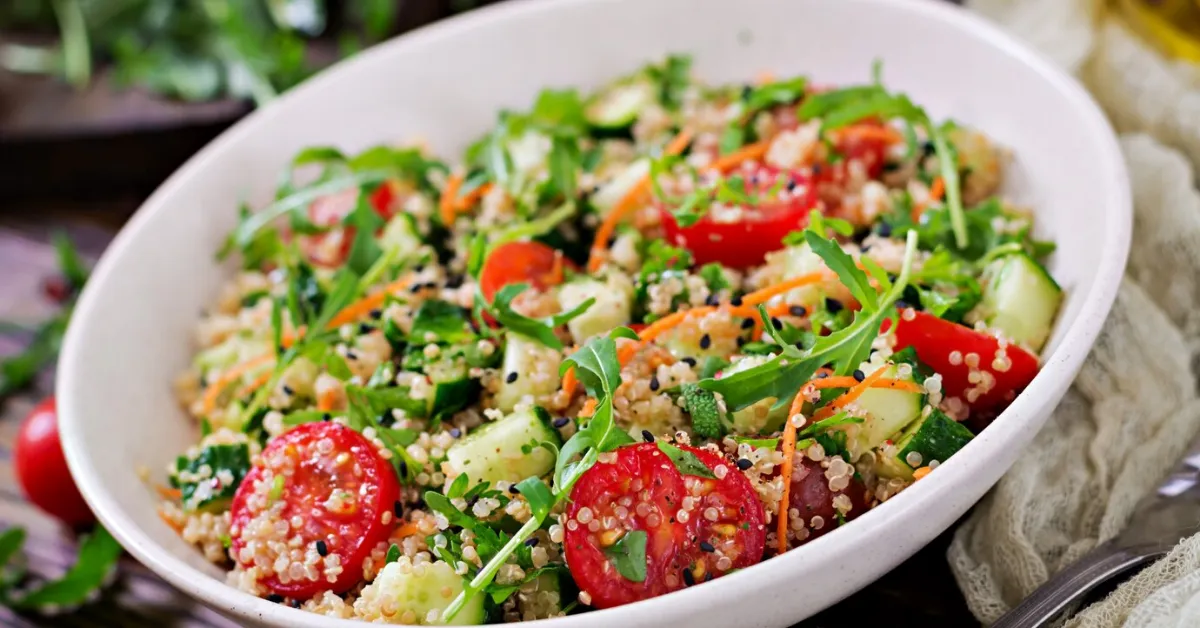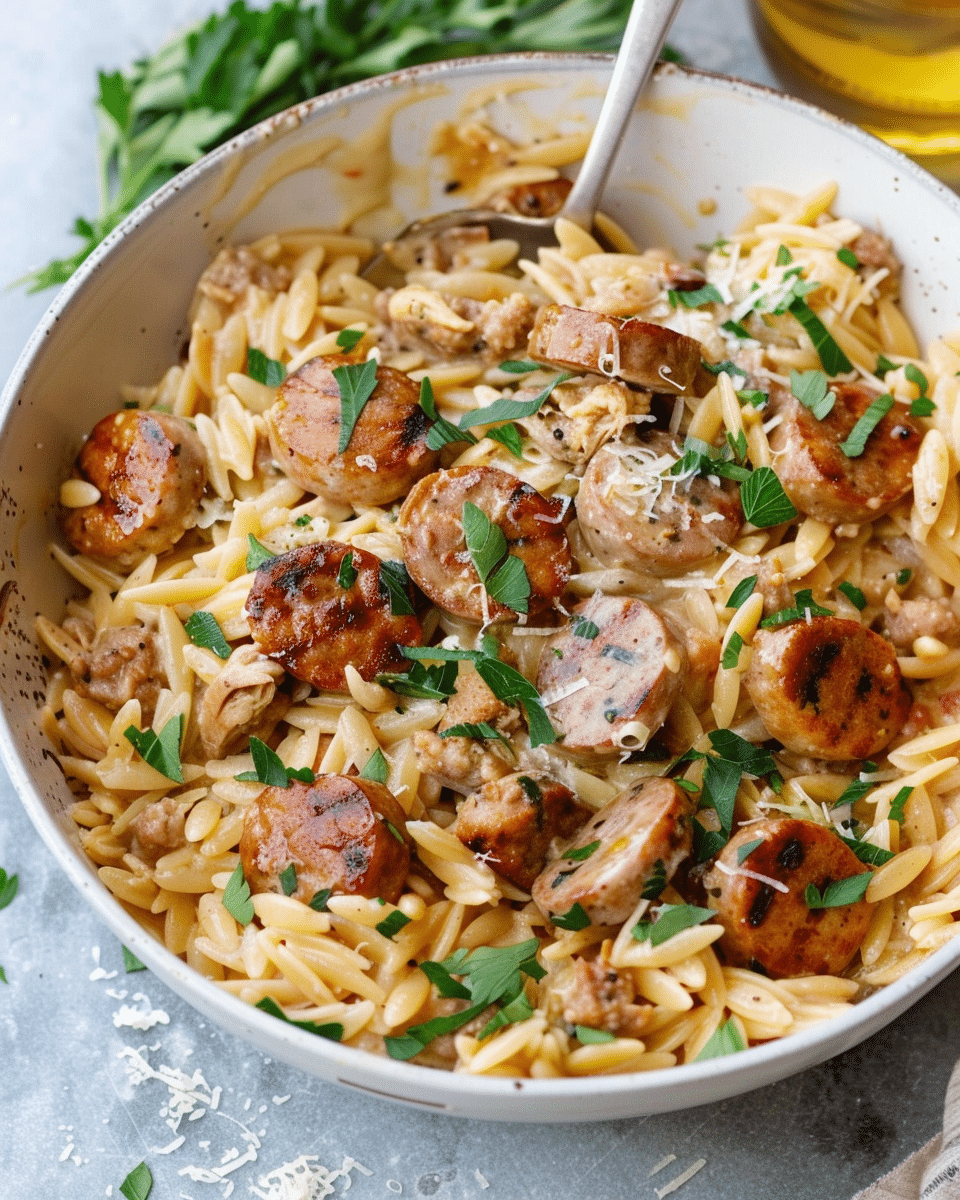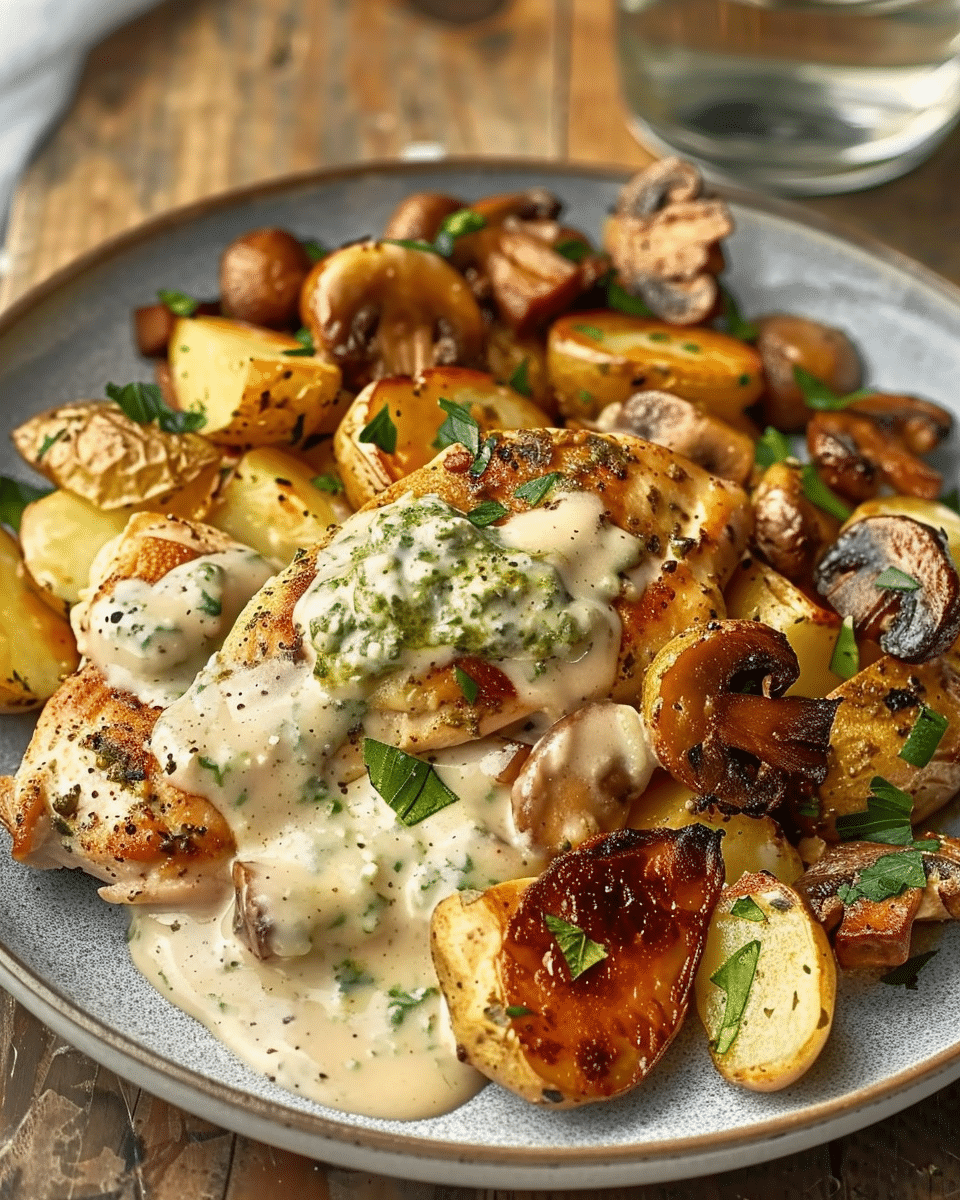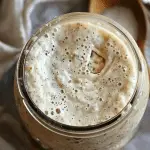If you’re looking to increase your protein intake but don’t eat meat, you may be wondering how to get 100g protein without meat per day. While meat is a convenient source of protein, there are plenty of plant-based and dairy alternatives that can help you reach your protein goals. In this article, we’ll explore some of the best ways to get 100 grams of protein without meat.
– Understanding Protein Requirements
Before we dive into specific sources of protein, it’s important to understand how much protein you need each day. The recommended daily intake of protein varies depending on factors such as age, sex, weight, and activity level. However, a general guideline is to aim for 0.36 grams of protein per pound of body weight. For example, if you weigh 150 pounds, you would aim for around 54 grams of protein per day. If you’re looking to build muscle or are very active, you may need more protein.
– Key Takeaways
- Plant-based protein sources such as quinoa, lentils, and tofu can help you reach your protein goals without meat.
- Dairy alternatives like Greek yogurt, cottage cheese, and cheese can also be good sources of protein.
- Planning your meals and incorporating protein supplements can help ensure you’re getting enough protein each day.
Understanding Protein Requirements
Protein is an essential nutrient that plays a crucial role in building and repairing tissues, producing enzymes and hormones, and supporting the immune system. The recommended daily intake of protein varies depending on factors such as age, sex, weight, and physical activity level. According to the American Dietetic Association, the average adult needs about 0.8 grams of protein per kilogram of body weight per day. For a sedentary adult, this translates to about 56 grams of protein per day for a man and 46 grams of protein per day for a woman.
However, if you are physically active or trying to build muscle, you may need more protein. According to the International Society of Sports Nutrition, athletes and active individuals may benefit from consuming up to 2.2 grams of protein per kilogram of body weight per day. For example, a 150-pound person would need about 136 grams of protein per day to support muscle growth and recovery.
It is important to note that while protein is necessary for optimal health, consuming excessive amounts of protein can be harmful to the body. High protein diets can lead to dehydration, kidney damage, and increased risk of heart disease. Therefore, it is crucial to consume protein in moderation and as part of a balanced diet.
To meet your daily protein requirements without meat, you can incorporate a variety of protein-rich foods into your diet, such as beans, lentils, tofu, nuts, and seeds. Additionally, protein supplements such as protein powders and bars can be a convenient way to increase your protein intake. However, it is important to choose high-quality protein sources and avoid products that are high in added sugars and artificial ingredients.
Plant-Based Protein Sources
If you’re looking to increase your protein intake without consuming meat, there are plenty of plant-based options available. Here are some of the best sources of plant-based protein:
Legumes and Beans
Legumes and beans are an excellent source of protein, fiber, and other essential nutrients. They are also low in fat and can be used in a variety of dishes. Some of the best legumes and beans for protein include:
- Lentils: 1 cup cooked contains 18 grams of protein
- Chickpeas: 1 cup cooked contains 15 grams of protein
- Black beans: 1 cup cooked contains 15 grams of protein
- Kidney beans: 1 cup cooked contains 13 grams of protein
Nuts and Seeds

Nuts and seeds are another great source of protein and healthy fats. They are also rich in vitamins, minerals, and antioxidants. Some of the best nuts and seeds for protein include:
- Chia seeds: 2 tablespoons contain 4 grams of protein
- Hemp seeds: 2 tablespoons contain 6 grams of protein
- Almonds: 1/4 cup contains 8 grams of protein
- Pumpkin seeds: 1/4 cup contains 8 grams of protein
Whole Grains

Whole grains are not only a good source of protein but also provide fiber and complex carbohydrates. Some of the best whole grains for protein include:
- Quinoa: 1 cup cooked contains 8 grams of protein
- Brown rice: 1 cup cooked contains 5 grams of protein
- Barley: 1 cup cooked contains 4 grams of protein
- Oats: 1/2 cup dry contains 6 grams of protein
Vegetables

While vegetables may not be the first thing that comes to mind when you think of protein, many vegetables contain a surprising amount of protein. Some of the best vegetables for protein include:
- Broccoli: 1 cup cooked contains 4 grams of protein
- Spinach: 1 cup cooked contains 5 grams of protein
- Brussels sprouts: 1 cup cooked contains 4 grams of protein
- Peas: 1 cup cooked contains 8 grams of protein
By incorporating these plant-based protein sources into your diet, you can easily meet your daily protein needs without consuming meat.
Read:
- Think Vegetarians Can’t Enjoy Pizza? Think Again!
- Global Vegetarianism: Trends & Plant-Based Benefits
- Zupas Mango Berry Salad
Protein-Packed Dairy Alternatives
If you’re looking for a source of protein without meat, dairy alternatives can be a great option. Many non-dairy products are fortified with extra protein, making them an excellent way to boost your protein intake. Here are a few options to consider:
Soy Products
Soy is a complete protein, meaning it contains all nine essential amino acids that your body needs to function properly. Soy products like tofu, tempeh, and edamame are all excellent sources of protein. For example, a half-cup of edamame contains around 11 grams of protein, while a 3-ounce serving of tofu can contain up to 8 grams of protein.
Non-Dairy Milk
Non-dairy milk alternatives like almond milk, soy milk, and oat milk are often fortified with extra protein. For example, a cup of soy milk can contain up to 8 grams of protein, while a cup of almond milk can contain around 1 gram of protein. Be sure to check the label when choosing non-dairy milk products to ensure that they are fortified with protein.
In addition to being packed with protein, dairy alternatives can be a great option for those who are lactose intolerant or have a dairy allergy. They can also be a good choice for those who are looking to reduce their environmental impact, as the production of non-dairy products often requires fewer resources than traditional dairy products.
Protein Supplements
If you’re having trouble reaching your daily protein goals without meat, protein supplements can be a great option. Here are a few plant-based protein powders to consider:
Pea Protein
Pea protein is a popular choice for vegetarians and vegans because it’s a complete protein, meaning it contains all nine essential amino acids. It’s also easily digestible and hypoallergenic, making it a great option for people with food sensitivities. One scoop of pea protein powder typically contains around 20-25 grams of protein.
Hemp Protein
Hemp protein is another complete protein source that’s also high in fiber and healthy fats. It has a slightly nutty flavor and can be added to smoothies, oatmeal, or baked goods. One scoop of hemp protein powder typically contains around 15-20 grams of protein.
Rice Protein
Rice protein is a hypoallergenic and easily digestible protein source that’s also low in fat and carbohydrates. It’s a great option for people with allergies or intolerances to soy or dairy. One scoop of rice protein powder typically contains around 20-25 grams of protein.
When choosing a protein supplement, it’s important to look for high-quality sources that are free of additives and artificial sweeteners. Always read the ingredient label and choose a product that fits your dietary needs and preferences.
Meal Planning for Optimal Protein Intake
Getting 100 grams of protein per day without meat is definitely achievable, but it does require some careful meal planning. Here are some tips to help you plan your meals for optimal protein intake:
- Start by identifying high-protein foods that you enjoy and can easily incorporate into your meals. Some examples include eggs, Greek yogurt, cottage cheese, nuts, seeds, legumes, and tofu.
- Aim to include a protein source in every meal and snack. This will help ensure that you are getting enough protein throughout the day.
- Plan your meals around protein-rich foods. For example, you could have a spinach and mushroom omelet for breakfast, a lentil soup for lunch, and a tofu stir-fry for dinner.
- Don’t forget about snacks! Snacks can be a great way to boost your protein intake. Some snack ideas include Greek yogurt with berries and almonds, hummus with veggies, and roasted chickpeas.
- Consider using protein supplements if you are having trouble meeting your protein needs through food alone. However, keep in mind that supplements should not be relied on as your only source of protein.
By following these tips, you can easily get 100 grams of protein per day without meat. Remember to vary your protein sources to ensure that you are getting a wide range of nutrients.
Potential Benefits and Challenges
Going meatless can have several potential benefits, such as reducing the risk of chronic diseases, including heart disease, diabetes, and certain types of cancer. Plant-based diets are rich in fiber, vitamins, and other nutrients, which can help improve overall health. Vegetarians generally consume fewer calories and less fat than those who eat meat, which can lead to weight loss and improved weight management.
However, there are also some challenges to going meatless. One of the biggest challenges is getting enough protein. Protein is essential for building and repairing tissues, and it is also important for maintaining a healthy immune system. Many people associate protein with meat, but there are plenty of plant-based sources of protein, such as beans, lentils, nuts, and whole grains.
Another challenge to going meatless is ensuring that you are getting all of the necessary vitamins and minerals. Meat is a good source of several important nutrients, including iron, zinc, and vitamin B12. While it is possible to get these nutrients from plant-based sources, it can be more challenging to do so.
Overall, going meatless can be a great way to improve your health and reduce your environmental impact. However, it is important to be mindful of your protein and nutrient intake to ensure that you are meeting your body’s needs.
FAQs
What does 200g of protein look like? 200g of protein can be achieved with a combination of foods: 3 chicken breasts (90g), 2 cups of lentils (36g), 4 eggs (24g), 2 cups of Greek yogurt (40g), and a scoop of protein powder (20g).
How to get 150g of protein a day? Aim for diverse sources: 2 chicken breasts (60g), 1 cup of lentils (18g), 3 eggs (18g), 1 cup of Greek yogurt (20g), 1 cup of quinoa (8g), 2 servings of tofu (24g), and a handful of almonds (2g).
What does 300 grams of protein look like? That’s like consuming 5 chicken breasts (150g), 3 cups of lentils (54g), 6 eggs (36g), 3 cups of Greek yogurt (60g), and 2 scoops of protein powder.
How to get 80g of protein a day? Combine 1 chicken breast (30g), 1/2 cup of lentils (9g), 2 eggs (12g), 1 cup of Greek yogurt (20g), 1 serving of tofu (8g), and a small portion of seeds (1g).
Conclusion
In conclusion, getting enough protein on a meat-free diet is not as hard as it may seem. There are various plant-based sources of protein available that can easily meet your daily needs. By incorporating a variety of these foods into your diet, you can enjoy the many benefits of a meat-free lifestyle while still getting all the nutrients your body needs.
Some of the best plant-based protein sources include lentils, beans, quinoa, tofu, tempeh, nuts, and seeds. These foods are not only rich in protein but also provide other essential nutrients such as fiber, vitamins, and minerals.
It’s also important to note that the amount of protein you need may vary depending on your age, gender, weight, and activity level. Consult with a healthcare professional or registered dietitian to determine your specific protein needs and ensure you’re meeting them.
Overall, with a little planning and creativity, it’s easy to hit your protein goals without meat. Incorporate a variety of plant-based protein sources into your meals and snacks, and enjoy the many health benefits that come with a balanced and nutritious diet.









